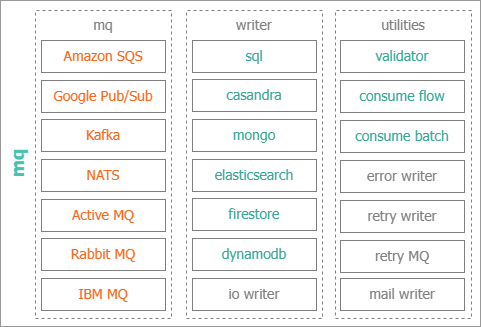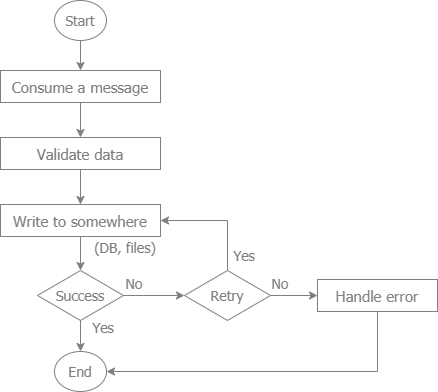# Packages
No description provided by the author
No description provided by the author
No description provided by the author
No description provided by the author
No description provided by the author
No description provided by the author
No description provided by the author
No description provided by the author
No description provided by the author
No description provided by the author
No description provided by the author
No description provided by the author
No description provided by the author
No description provided by the author
No description provided by the author
No description provided by the author
No description provided by the author
No description provided by the author
No description provided by the author
No description provided by the author
No description provided by the author
No description provided by the author
No description provided by the author
# README
mq

Message Queue
- A message queue is a communication method used in software systems to exchange information between different components or services asynchronously. It provides a way to send messages between producers (senders) and consumers (receivers) without requiring both parties to interact with the message queue at the same time. This decoupling allows for more scalable, reliable, and flexible system architectures.
Key Concepts of Message Queues
Producers (Publishers/Senders/Writers)
- The components or services that send messages to the queue.
Consumers (Subscriber/Receivers/Readers)
- The components or services that receive and process messages from the queue.
Messages
- The data or payload that is sent by the producer and processed by the consumer. Messages can contain various types of information, such as text, binary data, or structured data like JSON or XML.
Queues
- Data structures that store messages until they are processed by consumers. Queues typically follow a FIFO (First In, First Out) principle, but other ordering mechanisms can also be implemented
Brokers
- Middleware components that manage the queues, handle the routing of messages, and ensure reliable delivery.
- Examples include RabbitMQ, Apache Kafka, Amazon SQS, Google Pub/Sub, NATS, Active MQ and IBM MQ.
Message Queue Implementations
RabbitMQ
- An open-source message broker that supports multiple messaging protocols. It provides features like message routing, persistence, and acknowledgment.
- RabbitMQ GO library is at rabbitmq, to wrap and simplify rabbitmq/amqp091-go. The sample is at go-rabbit-mq-sample
- RabbitMQ nodejs library is at rabbitmq-ext, to wrap and simplify amqplib. The sample is at rabbitmq-sample
Apache Kafka
- A distributed streaming platform that handles high-throughput, low-latency message processing. It is often used for building real-time data pipelines and streaming applications.
- Kafka GO library is at kafka, to wrap and simplify 3 Kafka GO libraries: segmentio/kafka-go, IBM/sarama and confluent. The sample is at go-kafka-sample
- Kafka nodejs library is at kafka-plus, to wrap and simplify kafkajs. The sample is at kafka-sample
Amazon SQS (Simple Queue Service)
- A fully managed message queue service offered by AWS. It provides a reliable, scalable, and cost-effective way to decouple and coordinate distributed software systems and microservices.
- SQS GO library is at sqs, to wrap and simplify aws-sdk-go/service/sqs. The sample is at go-amazon-sqs-sample
Google Cloud Pub/Sub
- A fully managed messaging service that allows for event-driven systems and real-time analytics on Google Cloud Platform.
- Pub/Sub GO library is at core-go/pubsub, to wrap and simplify go/pubsub. The sample is at go-pubsub-sample
- Pub/Sub nodejs library is at google-pubsub, to wrap and simplify @google-cloud/pubsub. The sample is at pubsub-sample
IBM MQ
- IBM MQ at ibmmq, to wrap and simplify ibmmq. The sample is at go-ibm-mq-sample
- IBM MQ nodejs library is at ibmmq-plus, to wrap and simplify ibmmq. The sample is at ibmmq-sample
Active MQ
- Active MQ at activemq, to wrap and simplify go-stomp. The sample is at go-active-mq-sample
- Active MQ nodejs library is at activemq, to wrap and simplify amqplib. The sample is at activemq-sample
NATS
- NATS at nats, to wrap and simplify nats.go. The sample is at go-nats-sample
- NATS nodejs library is at nats-plus, to wrap and simplify nats. The sample is at nats-sample
Azure Service Bus
- A fully managed enterprise message broker with message queues and publish-subscribe topics. It is designed for complex messaging scenarios in Azure.
Advantages of Message Queues
Decoupling
- Producers and consumers do not need to be aware of each other.
- They can operate independently, allowing for more modular and maintainable systems.
Scalability
- Enables horizontal scaling by allowing multiple producers and consumers to interact with the queue concurrently.
Reliability
- Provides mechanisms for ensuring message delivery, such as persistence, acknowledgment, and retries.
Asynchronous Communication
- Allows systems to handle operations asynchronously, improving responsiveness and efficiency.
- Producers can send messages without waiting for consumers to process them immediately.
Load Balancing
- Messages can be distributed across multiple consumers, balancing the load and ensuring efficient processing.
Fault Tolerance
- Messages can be persisted in the queue, ensuring that they are not lost even if producers or consumers crash. This improves the resilience of the system.
Use Cases of Message Queues
Microservices Communication
- Facilitates communication between microservices in a distributed system.
- For example, an order service can send messages to a payment service and a shipping service.

- A typical micro service

- A common flow to consume a message from a message queue.

- The sample is at go-kafka-sample
Task Queues
- Managing background tasks and job processing.
- For example, a web application can offload time-consuming tasks like image processing or email sending to a message queue.
Event-Driven Architectures
- Implementing event-driven systems where different components react to events.
- For example, a user registration event can trigger notifications, welcome emails, and analytics updates.
Data Pipelines
- Managing data flow in big data applications.
- For example, log data from various sources can be collected, processed, and analyzed using a message queue.
Decoupling Frontend and Backend
- Frontend applications can send messages to a queue, which are then processed by backend services.
- This improves responsiveness and allows for better handling of varying load conditions.
Conclusion
Message queues are a crucial component in modern software architecture, providing a robust way to manage communication between different parts of a system. They enable decoupling, scalability, reliability, and fault tolerance, making them essential for building large-scale, distributed, and resilient applications. Understanding and implementing message queues can significantly enhance the efficiency and effectiveness of software systems.
Installation
Please make sure to initialize a Go module before installing core-go/mq:
go get -u github.com/core-go/mq
Import:
import "github.com/core-go/mq"
Build for confluent:
go build -buildmode=exe main.go